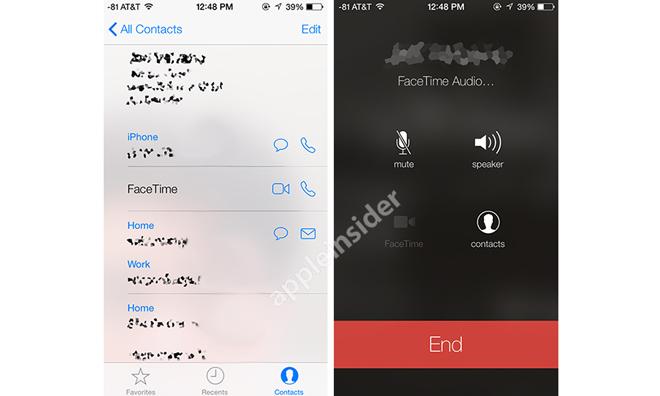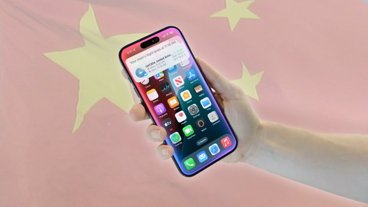With iOS 7, Apple will introduce FaceTime Audio, a first-party voice over IP extension of the company's video calling service that could disrupt the mobile industry by bringing free long distance and international calling to iPhone users around the world.
Glossed over by some amid the deluge of iOS 7 functions presente at WWDC on Monday, FaceTime Audio could be a game-changing addition to Apple's mobile operating system, even more so than the video calling service it's built on.
In the iOS 7 beta, FaceTime Audio can be found wherever the usual video version of the service is implemented. For example, users can place calls from the Phone app, the dedicated FaceTime app and Messages, among others. For now, the service appears is Wi-Fi only, though that could change before the OS is released this fall.
Receiving end of a FaceTime Audio call.When FaceTime appears as a communication option, it is now followed by two icons: a camera for video and a phone for audio-only. In its current form, the two icons are situated very close to each other, forcing more precision than should be required to hit just one button. Alternatively, a video call can be made by selecting the "FaceTime" text, which appears to be the feature's default mode.
Using FaceTime from other apps like Messages is a bit different. As seen below, selecting the "Contact" asset to the right of a friend's name brings up FaceTime as one of three choices. From there, a pop-up pane is displayed with distinct options to make either a video or audio call.
The familiar FaceTime ring is used when placing a call, and sound quality is surprisingly good for what is essentially a beta product. Voice clarity is on a par with other apps like Skype for iOS, though using the iPhone's speaker causes considerable echo in this early version. It is unknown if FaceTime Audio supports full-duplex communication, that is the simultaneous transfer of voice data as seen in landlines, though lag was imperceptible in most situations.
Theoretically, because FaceTime is an Internet-based protocol, any two people with devices running iOS 7 can connect with one another, no matter where they are located. This is presuming they both have access to a Wi-Fi network.
Because the iPhone is used by so many, a baked-in VoIP solution that is readily accessible and easy to use could face opponents in the wireless industry as the data-based service could disrupt long-distance calling revenue streams. Just as telecoms were wary of allowing video FaceTime calls on their networks, which used valuable bandwidth, the audio-only version also proves problematic as data would eat into subscription minutes.
The new feature may not bode well for cellular carriers, such as AT&T, which fought to block certain subscribers from using the service on its network. AT&T has since promised that all customers, including those with grandfathered-in unlimited plans, will be able to use the video version of FaceTime over their networks, it remains unclear if the same policy will be extended to FaceTime Audio.
 Mikey Campbell
Mikey Campbell







-m.jpg)






 Charles Martin
Charles Martin
 Christine McKee
Christine McKee
 Wesley Hilliard
Wesley Hilliard
 Malcolm Owen
Malcolm Owen
 Andrew Orr
Andrew Orr
 William Gallagher
William Gallagher
 Sponsored Content
Sponsored Content








96 Comments
First person to say "Dumb Pipes" wins :lol:
I was just thinking the other day that Apple should offer a service like this. I have been using Google Voice recently but the service has not been impressive although the issues could be on the other end of the phone according to those with whom I have spoken when using the service.
It's been a long time since I heard the term "[I]long distance phone calls[/I]" or even worried about going over my "[I]minutes[/I]" It's funny how things change over time.
About friggin time. Was it so hard ?
Instantly banned on AT&T, Verizon, Sprint, T-Mobile, Virgin, O2, Orange, and everyone else.
They'll make up further lies about why Skype will be allowed but FaceTime won't.
About friggin time. Was it so hard ?
Where's your mobile hardware and software platform with 300,000,000 users, then? Go on, show us.